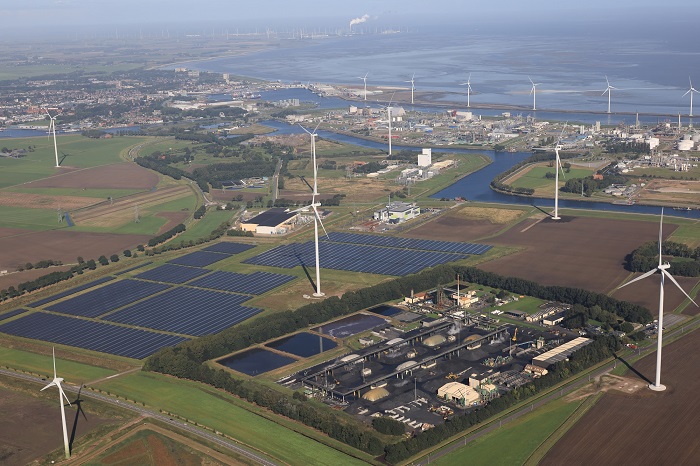Annual figures for 2021: Groningen Seaports forecasts a profit of 5.5 million euros
Annual figures for 2021: Groningen Seaports forecasts a profit of 5.5 million euros

Groningen Seaports looks back on 2021 with satisfaction. The still prevalent coronavirus made it a special year, but fortunately this had little impact on developments in the port areas. On the financial front, Groningen Seaports enjoyed excellent results in 2021. Groningen Seaports experienced a good year with a turnover of 54 million euros and a profit forecast of 5.5 million euros. This is due in part to over thirteen million tons of transhipment, which again approaches the record year of 2018, and the 36.5 hectares of land issued to companies.
Ports in demand
Many companies have advanced plans to establish themselves in Groningen’s seaports. The sites in Eemshaven and Delfzijl are more desirable than ever. That explains why the Municipality of Het Hogeland and the Province of Groningen announced the expansion of Eemshaven in April, and preparations for substantial investment in the Oosterhorn industrial estate are in full swing. Groningen Seaports’ CEO Cas König: “Companies are eager to establish themselves in our area, and that means the sites and infrastructure have to be in order. We share the view of the interested companies that the Northern Netherlands are the cradle of the energy transition and plan to achieve sustainable growth together with suitable parties. The future of the Netherlands lies here, in Groningen. In our ports.”
Transhipment figures grow
Transhipment of over thirteen million tons increased by 21 per cent last year compared to 2020. Broken down by sea and inland shipping, sea shipping increased by 34 per cent to 7.7 million tons and inland shipping by 7 per cent to 5.6 million tons. König: “The growth in seaborne transhipment is mainly due to the quantities of sand that have been brought in for projects such as the development of the Heveskes industrial estate. There has also been more transhipment at Eemshaven, mainly for solid fuels and biomass.” In contrast, there was a slight fall in chemical product transhipment. The number of ships increased by 12 per cent to 9185.
Plenty of developments
In 2021, Groningen Seaports continued to develop in various areas. For example, the year saw the completion of the logistics handling and transportation of the submerged part of the world’s largest offshore wind farm Hornsea Two, consisting of 165 wind turbines. König: “Many companies in our port area are busy developing new projects. The new Eemshaven-Vierverlaten relief road is taking shape, and in December it was announced that the world’s first emission-free malt factory will be built at Eemshaven. A new ferry connection between Eemshaven and Kristiansand in Norway is also under construction, and a large shared logistics building is due to be built near Emmahaven. This is all great news that we can be proud of.”
As well as those projects, Groningen Seaports is demonstrating its commitment to sustainability. That was recognised when Groningen Seaports was awarded EcoPorts certification in 2021 for the seventh consecutive time. “We have selected fifty sustainable projects that have been completed in and around the ports in recent years. Photos were selected from those projects and mounted alongside each other. This long ‘loop’ tells our green story,” says König.
Outlook
In 2022 Groningen Seaports intends to continue on the course it took and will continue to work hard to make its industrial sites suitable for interested companies to actually establish themselves there. This focuses mainly on the Oosterhorn-Zuid industrial estate in Delfzijl, where substantial investments are in the pipeline. “We also plan to move our green hydrogen plans forward to take the next step in the energy transition. Finally, I hope a solution will soon be found to the nitrogen issue and the landing of green power at sea. There are still many obstacles to overcome in this area,” concludes König.
CEO Cas König and CFO Harold Sanders are looking back at the year 2021

